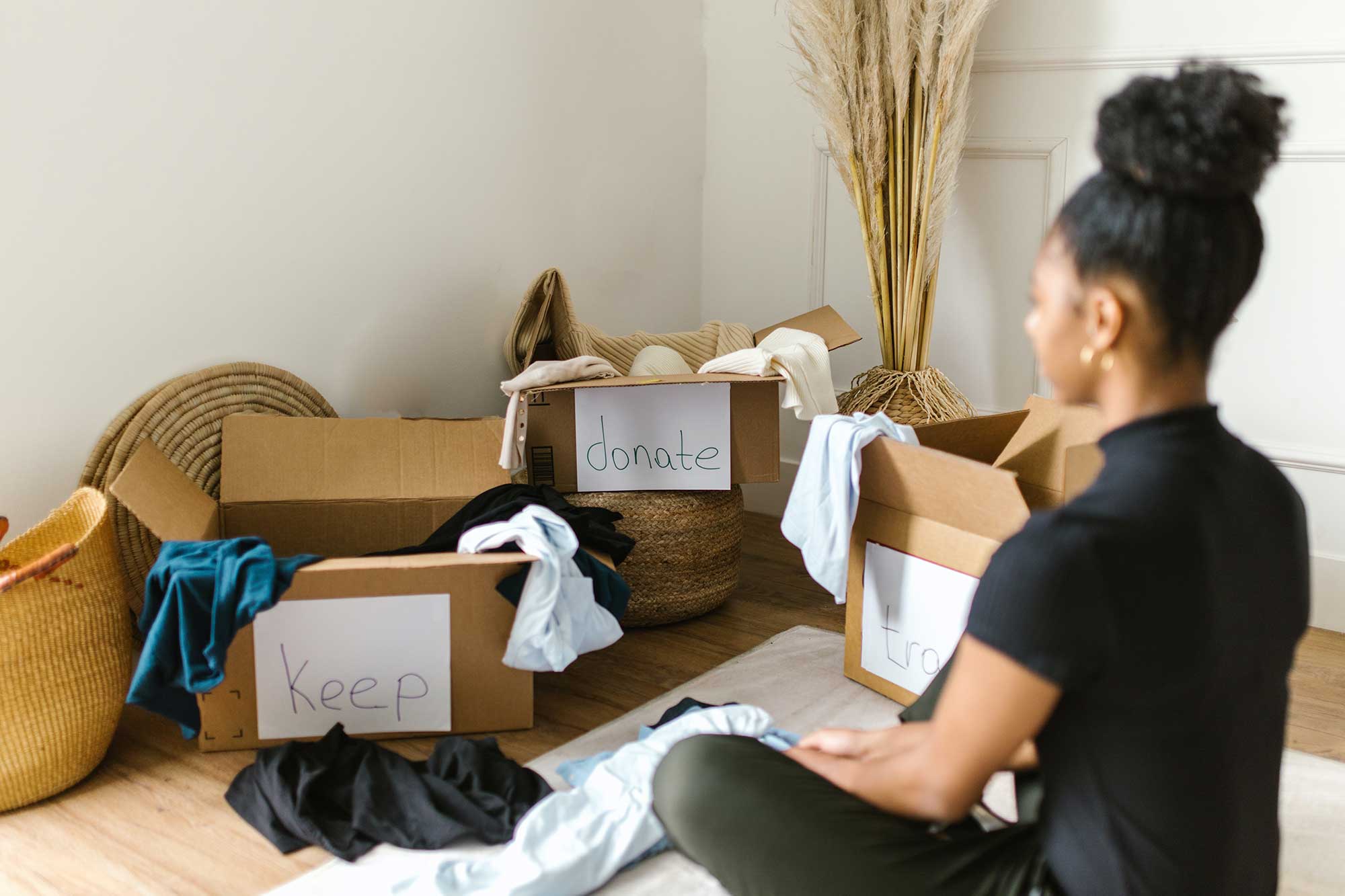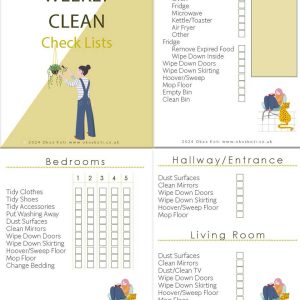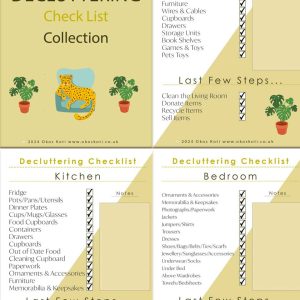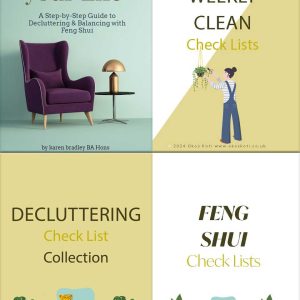Living Room Decluttering: A Step-by-Step Guide
In our fast-paced modern lives, our living rooms often serve as multifunctional spaces, accommodating everything from family gatherings to quiet evenings of relaxation. However, this versatility can lead to clutter, making your living room feel chaotic and overwhelming. In this guide, we will walk you through the process of decluttering and organising your living room step by step. By the end of this journey, you’ll have not only a tidier and more organised space but also a living room that’s environmentally friendly and sustainable.
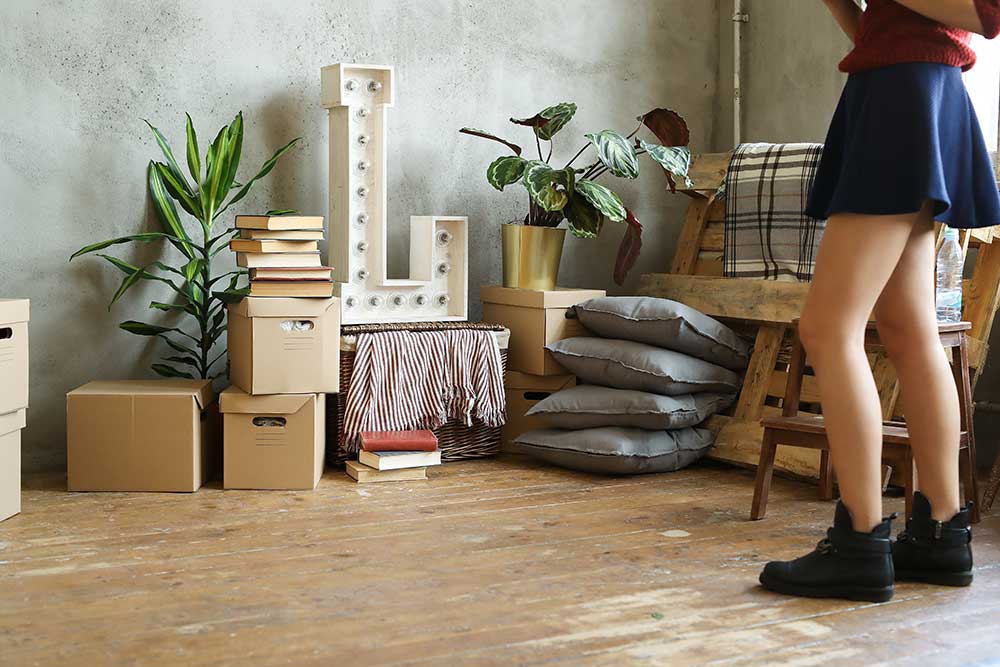
Assess and Plan
Before diving headfirst into decluttering your living room, take a moment to assess and plan. A well-thought-out strategy will save you time and ensure a more organised space.
- Set Clear Goals: Start by defining what you want to achieve. Do you want to create more open space, improve functionality, or make your living room more sustainable? Be specific in your goals.
- Create Zones: Identify different zones within your living room based on their functions. Common zones include seating areas, entertainment centres, and workspaces.
- Gather Supplies: Collect the necessary supplies, such as bins, trash bags, labels, and cleaning products. Using eco-friendly cleaning products is a great way to make your decluttering process environmentally friendly.
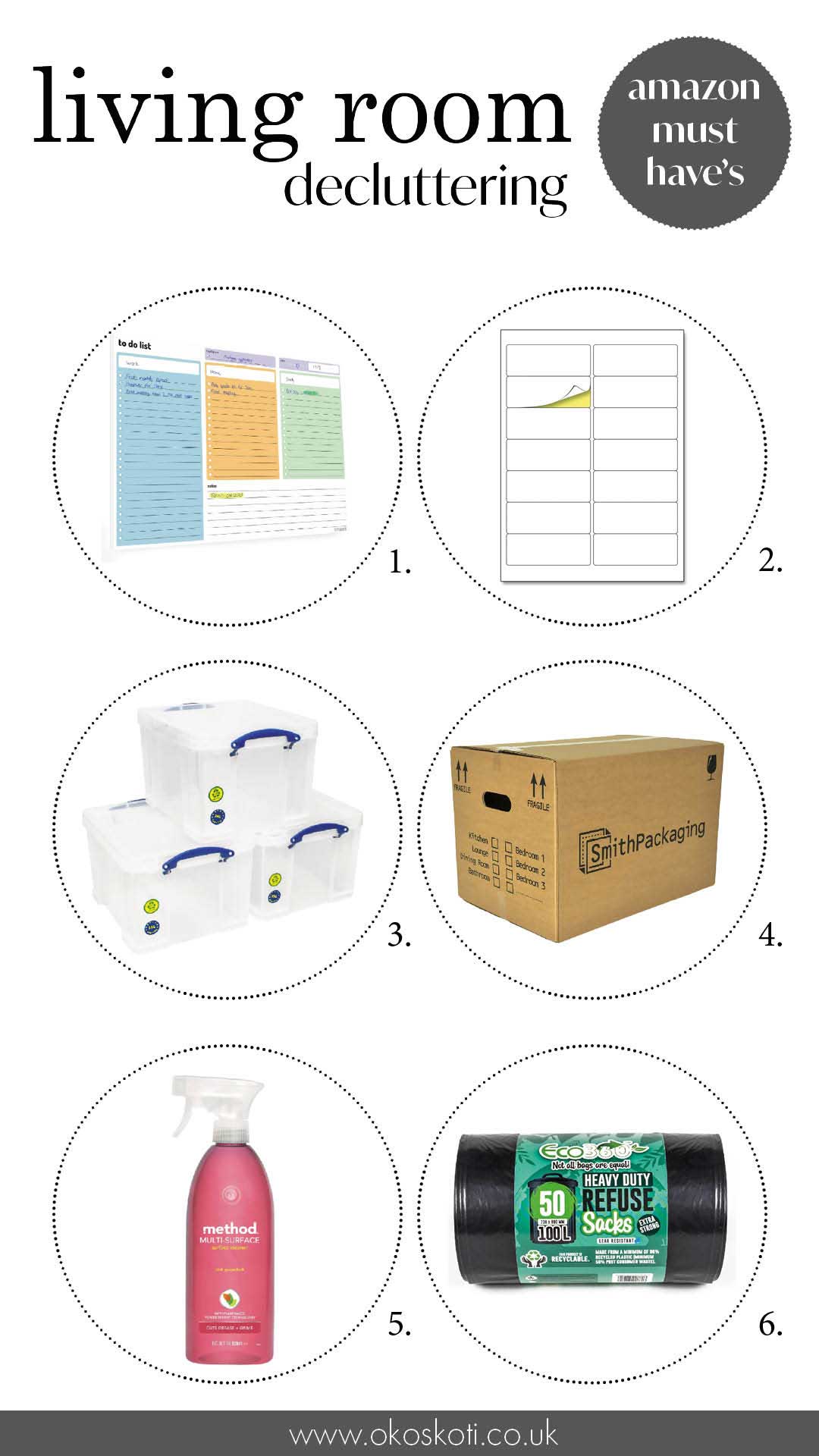

Section 1: Decluttering Your Living Room
Decluttering your living room can be a transformative process, creating a serene and functional space where you can easily relax and entertain. Let’s delve deeper into the various decluttering techniques and strategies:
The Four-Box Method
The Four-Box Method is a simple yet highly effective approach to decluttering your living room. This technique streamlines the process by categorising items into four distinct boxes: “Keep,” “Donate,” “Sell,” and “Trash.”
- Keep: Start by assessing items that you genuinely need and love. If it serves a purpose or holds sentimental value, it belongs in this box. As you go through your belongings, be sure to ask yourself, “Do I use this regularly, or does it bring me happiness?” If the answer is yes, it goes in the “Keep” box.
- Donate: This box is for items that are still in good condition but are no longer needed in your living room. Consider donating these items to local charities or organisations. Your generosity contributes to a more sustainable living room and helps those in need.
- Sell: Items in this box have value but no longer serve a purpose in your living room. Consider hosting a garage sale or listing them online to earn some extra cash while giving these items a second life with a new owner.
- Trash: Finally, the “Trash” box is for items that are damaged, broken, or no longer useful. Responsibly dispose of these items following your local waste disposal guidelines to minimise environmental impact.
Minimalism Approach
Embracing a minimalist approach is all about focusing on the quality and purpose of the items in your living room. This mindset shift encourages you to evaluate each item with a critical eye.
- Joy and Purpose: As you hold each item, ask yourself whether it brings you joy or serves a practical purpose in your living room. If it does neither, it might be time to part ways with it. This technique, popularised by Marie Kondo, is an effective way to curate your belongings and maintain a decluttered living room.
- Quality Over Quantity: Strive for quality over quantity. Invest in items that are durable and timeless, reducing the need for constant replacements and reducing your environmental footprint.
One Area at a Time
The prospect of decluttering your entire living room at once can be overwhelming. To make the process more manageable, focus on one area or zone at a time.
- Start Small: Begin with a small section, like a bookshelf or a single drawer. Concentrating on one area allows you to dedicate your full attention to it, ensuring a thorough decluttering.
- Gradual Progress: Once you’ve successfully decluttered one area, gradually expand to larger sections, like a coffee table or a seating area. This incremental approach prevents overwhelm and helps you see progress more easily.
Be Ruthless
One of the most crucial steps in decluttering is to be ruthless in your decision-making.
- Let Go of Sentimental Attachments: While it’s essential to cherish sentimental items, sometimes they can become clutter. Be discerning about what truly holds sentimental value and what can be let go to create a more organised living room.
- Unused and Unloved: If you haven’t used or loved an item for an extended period, it’s time to say goodbye. Clinging to unused items only contributes to clutter and chaos.
Sustainable Decluttering
Sustainability and decluttering go hand in hand. When deciding to discard items, consider the environmental impact of your choices.
- Recycling: For items made of recyclable materials like glass, plastic, or paper, ensure they are recycled properly. Check your local recycling guidelines and facilities for specific instructions.
- Upcycling: Before discarding an item, consider whether it can be repurposed or upcycled. Old furniture, for instance, can often be given new life with a fresh coat of paint or creative modifications.
- Donation: Donating items to local charities or organisations can provide those in need with essential items and reduce waste. It’s a win-win for your living room and the community.
By following these decluttering techniques, you’ll not only create an organised living room but also contribute to a more eco-friendly and sustainable living environment. Remember that the decluttering process is an ongoing journey, and regular maintenance ensures a clutter-free and sustainable living room for the long term.
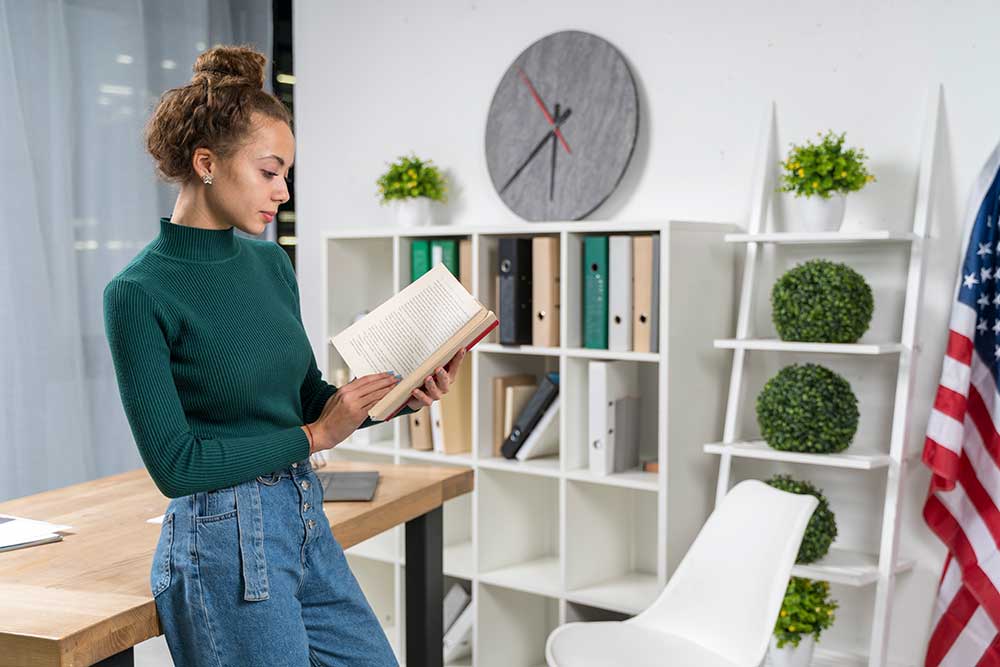
Section 2: Storage Solutions for the Living Room
Effective storage solutions are key to maintaining a clutter-free and organised living room. Whether your space is small or spacious, smart storage options can help you make the most of it. Here are some innovative storage solutions to consider:
-
Shelving Units
Wall-mounted or freestanding shelving units offer versatile storage for books, decor, and other items. Opt for eco-friendly materials like bamboo or reclaimed wood to promote sustainability.
-
Multifunctional Furniture
Choose furniture with hidden storage, such as ottomans with lift-up tops or coffee tables with concealed compartments. These pieces can hide away items like blankets, board games, or remote controls.
-
Floating Shelves
Floating shelves can be installed at varying heights to maximise vertical space. Use them to display your favourite items and keep them within easy reach without cluttering tabletops.
-
Built-In Cabinets
Custom built-in cabinets provide seamless and spacious storage. You can design these to blend with the overall aesthetic of your living room while optimising space.
-
Baskets and Bins
Decorative baskets and bins can be placed on shelves or under tables to store magazines, toys, or other small items. Choose sustainable materials like seagrass or cotton.
-
Wall Hooks and Racks
Install hooks and racks on your walls for hanging items like coats, hats, bags, or even bicycles. This not only frees up floor space but also adds a decorative element to your living room.
-
Modular Furniture
Modular furniture allows you to customise your storage according to your needs. Pieces like modular wall systems and cube storage can be arranged to accommodate various items.
-
Console Tables
A well-chosen console table with drawers or shelves can serve as an attractive and functional storage solution near the entrance or behind your sofa.
-
Floating TV Stand
Wall-mounted TV stands can be combined with floating shelves to create a sleek entertainment centre that also offers storage for media and electronics.
-
Movable Storage
Mobile storage units like rolling carts or trolleys are versatile and can be moved around as needed. Use them for crafting supplies, drinks, or as a portable bar.
-
Window Seats with Storage
If your living room has a window seat, consider one with hidden storage. This space can be used for stowing away extra cushions, blankets, or seasonal decor.
-
Drawer Dividers and Organisers
Within existing furniture with drawers, use dividers and organisers to keep small items like utensils, remotes, and stationery neatly arranged.
-
Under-Stair Storage
If your living room is located under a staircase, make use of this often-overlooked area with custom storage solutions or open shelving.
Remember to choose storage solutions that align with the style and functionality of your living room. Tailoring your choices to suit your needs will help maintain an organised and aesthetically pleasing space where clutter remains at bay.
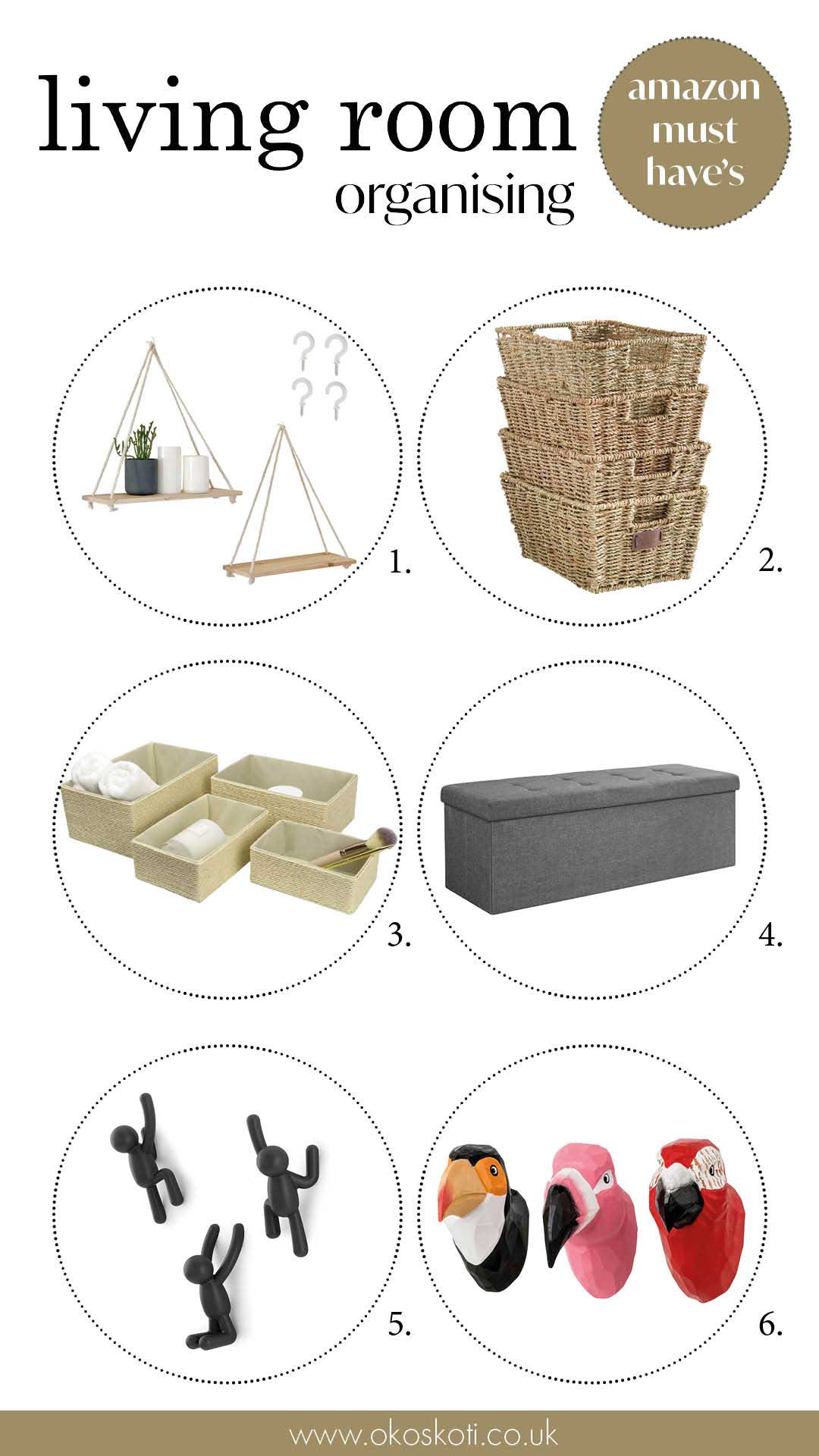

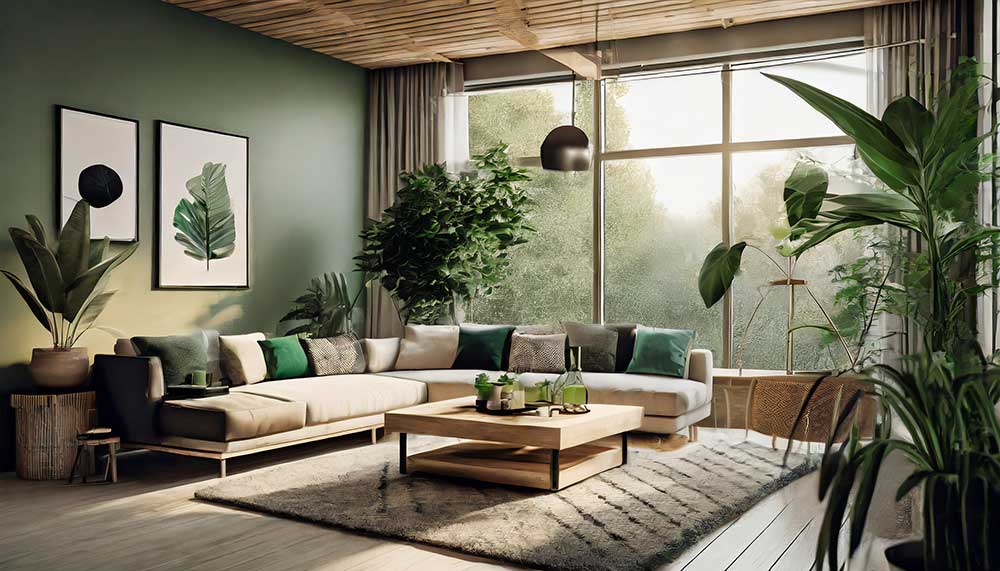
Section 3: Sustainable Living Room
Your living room is not just a space for relaxation and entertainment; it’s also an area where you can make environmentally conscious choices that contribute to a sustainable and eco-friendly lifestyle. Here, we’ll explore in-depth the practices and choices that can transform your living room into a sustainable haven:
Energy Efficiency
- Update Electronics: One of the most effective ways to create an eco-friendly living room is by replacing old, energy-consuming electronics with energy-efficient alternatives. Opt for appliances with ENERGY STAR ratings, which are designed to reduce energy consumption and lower your utility bills. Modern televisions, sound systems, and heating/cooling systems often come with energy-saving features.
- LED Light Bulbs: Make the switch to LED light bulbs. LED lighting is energy-efficient and long-lasting, reducing the frequency of bulb replacements. LED bulbs consume significantly less energy than traditional incandescent bulbs, resulting in lower energy costs and a reduced environmental impact.
Eco-Friendly Decor
- Reclaimed Wood Furniture: When selecting furniture for your living room, consider reclaimed wood pieces. Reclaimed wood is sourced from old structures or furniture, giving new life to material that would otherwise go to waste. This not only reduces the demand for new trees but also adds a unique, rustic charm to your space.
- Organic Textiles: Choose organic textiles for upholstery, throw pillows and curtains. Organic fabrics are made from natural, pesticide-free materials, promoting sustainable agriculture and reducing the release of harmful chemicals into the environment. Look for textiles made from organic cotton, hemp, or bamboo.
- Low-VOC Paint: Traditional paint can release volatile organic compounds (VOCs), which can have adverse health effects and contribute to indoor air pollution. Opt for low-VOC or VOC-free paints when giving your living room a fresh coat. These paints have minimal or no emissions, making them safer for you and the environment.
Indoor Plants
- Air-Purifying Plants: Incorporating indoor plants into your living room not only adds a touch of nature but also improves air quality. Plants like snake plants, peace lilies, and spider plants can help filter out common indoor pollutants, creating a healthier living environment. Be sure to choose low-maintenance plants that suit your lifestyle.
- Sustainable Planters: Consider eco-friendly planters made from materials like bamboo, cork, or recycled plastic. These planters reduce waste and offer a sustainable way to display your indoor greenery.
Recycled Materials
- Furniture and Decor: When purchasing furniture and decor items, give preference to those made from recycled or repurposed materials. Many companies create innovative pieces using recycled materials, such as reclaimed metal, glass, or plastics. Not only do these choices reduce waste, but they also support a circular economy.
- DIY and Upcycling: Get creative and consider DIY projects or upcycling existing items to give them new life. Old furniture can be sanded, painted, and transformed into unique, sustainable pieces. This not only saves money but also minimises waste.
By adopting these practices and choices, you can turn your living room into an eco-conscious space that provides comfort and style and contributes to a greener and more sustainable environment. Your efforts in the living room can serve as an inspiration for adopting sustainable practices in other areas of your home, further reducing your environmental impact.
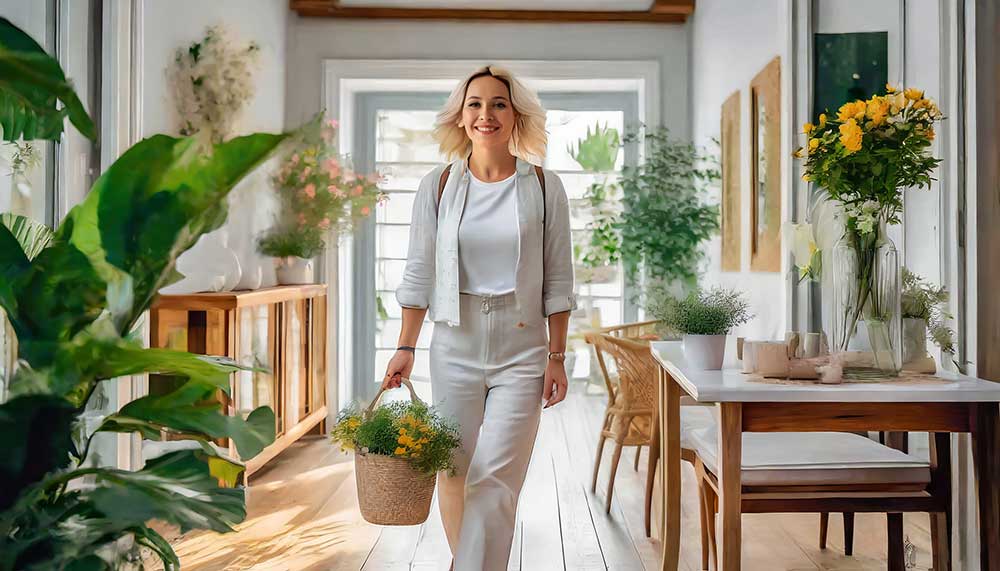
Section 4: Maintenance and Organisation Habits
Maintaining a clutter-free and environmentally friendly living room is an ongoing commitment. In this section, we will explore the habits and routines that will help you preserve the organisation and sustainability you’ve achieved.
Daily 10-Minute Cleanup
- Consistent Tidying: Dedicate a few minutes each day to a quick cleanup. This practice prevents clutter from accumulating and maintains a neat living room. Focus on returning items to their designated places, fluffing cushions, and wiping down surfaces. A daily habit of tidying helps you stay on top of messes before they become overwhelming.
- Engage the Family: Encourage family members or roommates to participate in the daily cleanup routine. When everyone is involved, maintaining a tidy living room becomes a shared responsibility and is more likely to be upheld.
Monthly Review
- Scheduled Check-Ins: Set aside a specific day each month for a thorough review of your living room. During this time, assess the space to ensure that items haven’t accumulated again. Pay attention to areas that tend to attract clutter, such as coffee tables and countertops.
- Rotate Decor: Use the monthly review as an opportunity to rotate decor items. Change the placement of decorative objects, artwork, and cushions to refresh the look of your living room. This simple action can help you appreciate your space anew and maintain an eco-friendly aesthetic.
Seasonal Cleaning
- Deep Clean: At the change of seasons, undertake a more comprehensive cleaning. Dust, vacuum, and clean all surfaces thoroughly. This keeps your living room hygienic and contributes to a healthy indoor environment.
- Eco-Friendly Updates: During your seasonal cleaning, reassess your decor and make eco-friendly updates. Consider incorporating seasonal and sustainable decor items, like organic cotton throw blankets for the winter or fresh potted herbs for the spring. This elevates your living room’s visual appeal and ensures that it remains environmentally friendly.
Mindful Purchasing
- Environmental Impact Consideration: Before bringing new items into your living room, pause and consider their environmental impact. Ask yourself if the product is made from sustainable materials, has a long lifespan, and serves a genuine purpose in your space. Choose products that align with your eco-conscious values.
- Quality over Quantity: Opt for high-quality, durable items over cheap, disposable alternatives. Investing in well-made furniture and decor may cost more upfront, but it can save you money in the long run and reduce waste.
Realising Success in Living Room Decluttering
By following this step-by-step guide, you can transform your living room into an organised, clutter-free, and environmentally friendly space. Remember that decluttering and sustainable living are ongoing processes. With determination and consistent effort, you can maintain a harmonious living room that benefits your well-being and the environment.
Consistency, mindfulness, and a commitment to the principles of decluttering and sustainability will ensure that your living room remains a harmonious and eco-friendly haven. Remember that each small effort contributes to a more significant positive impact on the environment, your well-being, and the overall quality of your living space.
“As an Amazon Associate, I earn from qualifying purchases”
FAQ: Living Room Decluttering Tips
Q1: How long will it take to declutter and organise my living room?
A1: The time required depends on the size and current condition of your living room. Small spaces may take a day or two, while larger or heavily cluttered areas may require a weekend or more. It’s best to go at your own pace to ensure thorough decluttering and organisation.
Q2: What are some eco-friendly cleaning products I can use during the decluttering process?
A2: You can opt for eco-friendly cleaning products that are biodegradable, non-toxic, and free from harsh chemicals. Look for brands that prioritise sustainability and offer cleaning solutions in recyclable or refillable containers.
Q3: How can I maintain my living room’s sustainability in the long term?
A3: Maintaining sustainability involves making eco-conscious choices in your daily life. Continue to recycle, reduce energy consumption, and be mindful of the items you bring into your living room. Regular reviews and seasonal updates can also help sustain your eco-friendly living room.

